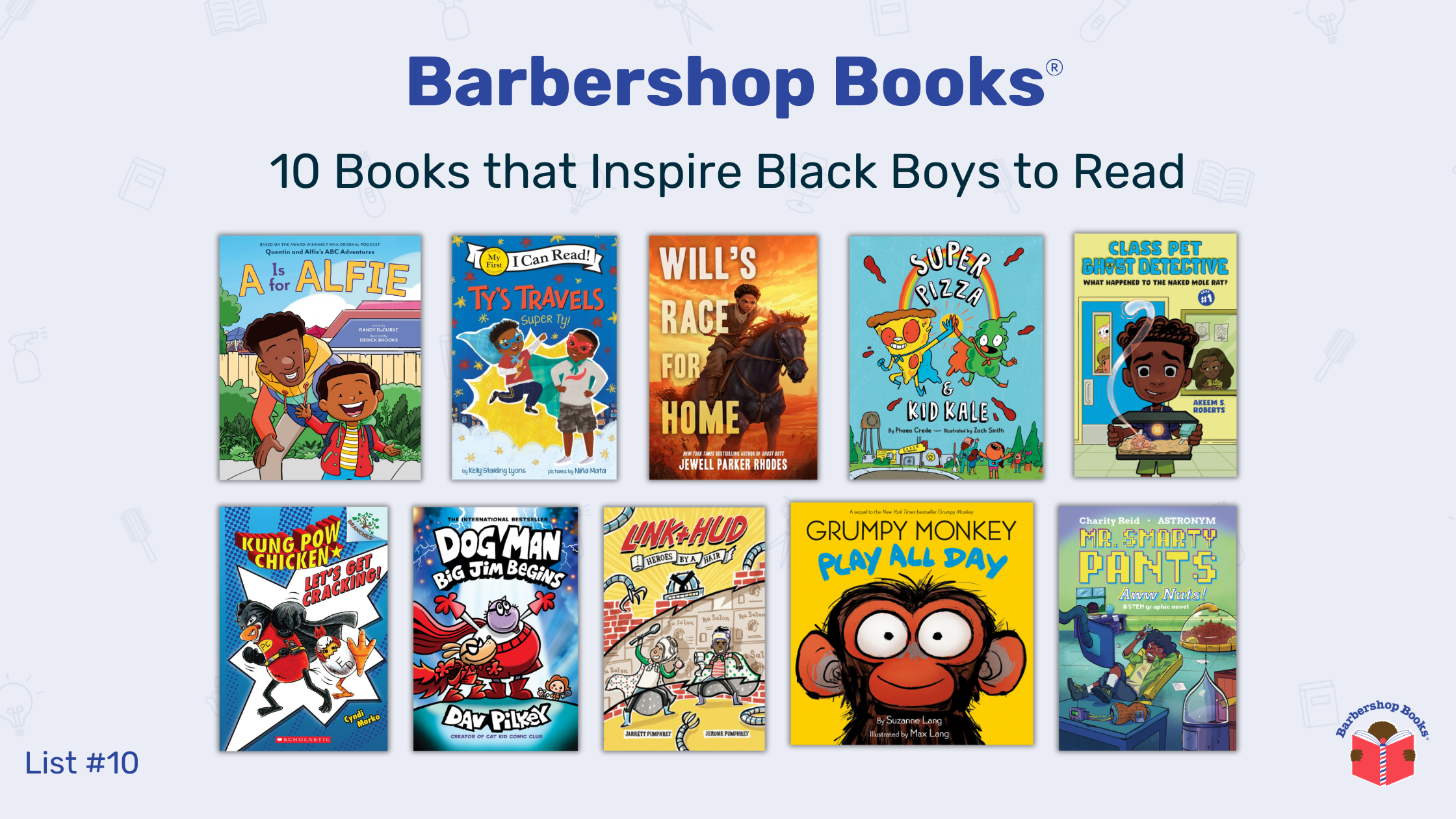Most publishers have African American, Latino, girl, or boy children’s book lists. Although useful, these cultural and gender-themed book lists are often inadequate, restrictive, and in many ways stereotypical. They are especially problematic for young black boys, many of whom are reluctant readers. Award-winning children’s book author and illustrator Christopher Myers wrote an opinion piece in last weekend’s New York Times that describes this problem as “the apartheid of children’s literature.” Myers argues, and I agree, that children’s books depicting people of color often avoid the imagination and creativity of fantasy and fiction – the genres young boys love most. Black historical figures are important, but black children should be able to find aspects of their culture and ethnic heritage outside of stereotypical nonfiction children’s books about history.
Children’s books with black characters should not be limited to oppression narratives.
There are amazing children’s books that all kids love. Just because a book is on an African American children’s book list, does not mean it will engage a black boy. In fact, some of the children’s books that appear on ethnic-themed lists appeal more to parents than children. They are written for parents who believe it’s important for children to learn about their history. It is important for children to learn about their history, but representations of non-white characters should be more diverse and not sacrifice the cultivation of wonderment that characterizes great children’s books or neglect the mission of children’s literature, which I believe is to help children better understand themselves and the world around them.
As a NYC kindergarten and 1st grade teacher, I was very intentional about the books I chose to read to my students. Patricia Polacco’s Mr. Lincoln’s Way or Jane Yolen’s Encounter are thought- provoking books that not only have nonwhite main characters, but these books weave race and cultural difference into the story in an organic way that doesn’t appear forced. The characters’ race and culture are not the story, but a part of the story. Do you get this important distinction? Ultimately, I support good children’s literature no matter who the main characters are and so should you. Children will thank you for it later in life. Sometimes, it’s better not to read to a child than to read bad books (i.e., boring characters, weak texts, and dull pictures) because bad books can cause children to develop negative associations with books and reading, which create life-long reluctant or non-readers.
Publishers need to tap into the reservoir of talented children’s book authors and illustrators of color for all children’s sake. Diversity in children’s literature doesn’t just benefit little black and brown kids. It’s important for all children to understand that other cultures are much more than a few historical figures or ethic traditions. Publishers must be committed to publishing books depicting non-white characters doing all sorts of things in all sorts of places. Equally important, educators must be committed to reading these books and promoting an appreciation and love of good children’s literature in all its varied forms.

